“The pursuit of knowledge is never-ending. The day you stop seeking knowledge is the day you stop growing.” – Brandon Travis Ciaccio
To become an expert in civil engineering, you’ll need to take the right civil engineering courses but beyond that, you’ll need to immerse yourself in the subject, including during your free time.
It is important for aspiring civil engineers to take advantage of the opportunity to learn from the work and accomplishments of leading civil engineers of the past and present. To help quench that thirst for knowledge, we’ve put together 9 must-read books (that aren’t textbooks) for the civil engineers of the future.
Let’s dive right in!
Structures: Or Why Things Don’t Fall Down
By J.E. Gordon
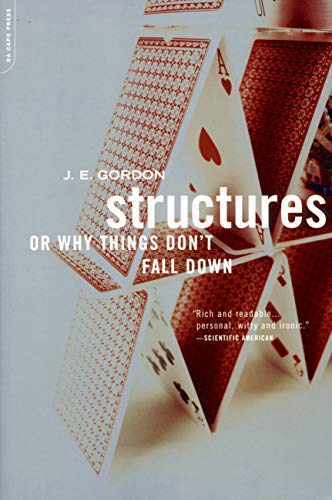
Why don’t suspension bridges collapse under the weight of eight lanes of traffic? How do dams hold back thousands of gallons of water? What principles guide the design of a skyscraper? This book answers all these questions and a lot more. J.E. Gordon offers clear and concise explanations of the basic forces that hold things together – from buildings and bodies to flying aircraft and eggshells. Free from technical jargon and full of wit and humour, Business Insider noted Structures as one of the “14 Books that inspired Elon Musk”. This book should be on every must-read list for all engineers.
Man of Iron: Thomas Telford and the Building of Britain
By Julian Glover
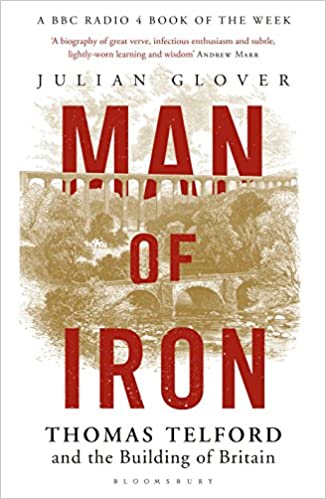 Born in 1757 in Eskdale, a remote Scottish valley close to the English border, the son of a shepherd, Thomas Telford become one of Britain’s most important engineers who ultimately changed the world. Telford referred to as “The Colossus of Roads”, invented the modern road and created the foundation for a road network tying England, Scotland, Ireland, and Wales together. The Menai Suspension Bridge is seen as a wonder of its time and the famous Pontcysyllte Aqueduct in Wales is a UNESCO world heritage site. Julian Glover’s biography of Britain’s greatest civil engineer examines the stories behind Telford’s achievements and what enabled him to succeed.
Born in 1757 in Eskdale, a remote Scottish valley close to the English border, the son of a shepherd, Thomas Telford become one of Britain’s most important engineers who ultimately changed the world. Telford referred to as “The Colossus of Roads”, invented the modern road and created the foundation for a road network tying England, Scotland, Ireland, and Wales together. The Menai Suspension Bridge is seen as a wonder of its time and the famous Pontcysyllte Aqueduct in Wales is a UNESCO world heritage site. Julian Glover’s biography of Britain’s greatest civil engineer examines the stories behind Telford’s achievements and what enabled him to succeed.
To Engineer Is Human: The Role of Failure in Successful Design
By Henry Petroski
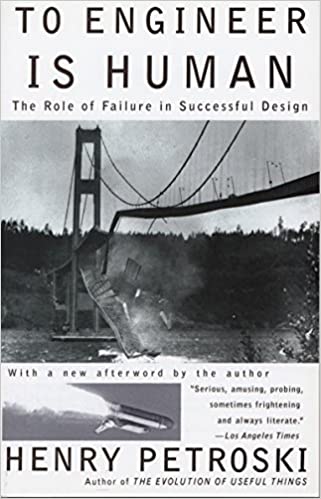 The lessons learned from the failures of design do more to further engineering knowledge
The lessons learned from the failures of design do more to further engineering knowledge
than all the successful structures in the world. Henry Petroski explores this notion by examining many of the best-known examples of failed design in action. How did a design error cause the horrific collapse of the walkways at the Kansas City Hyatt Regency Hotel in 1981? What caused the Tacoma Narrows Suspension Bridge to collapse under mild conditions in 1940? Petroski looks at these and other lesser-known examples as he analyzes the role of failure in the design process.
Built: The Hidden Stories Behind our Structures
By Roma Agrawa
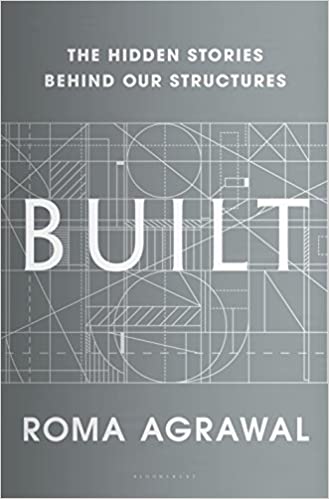
In Roma Agarawal’s first book, “Built: The Hidden Stories Behind our Structures”, the structural engineer uses science, history, illustrations, and her own stories to shed light on some of the wonders of engineering. She explores the evolution of construction, from primitive mud huts of our past to the towering skyscrapers that dominate city skylines. She gives answers to some of humankind’s greatest feats such as: how we have tunneled through kilometres of solid mountain, how we bridged across the widest of rivers, and how we tamed nature’s water resources. She tells stories of the people who created the materials for record-breaking structures like the concrete dome of the Pantheon and the frame of the Eiffel tower. She also touches on tragedies like the collapse of the Quebec Bridge in 1907. Her life-long fascination with buildings and use of personal stories help to reveal the extraordinary science behind her profession.
Why Buildings Fall Down: How Structures Fail
By Matthys Levy and Mario Salvadori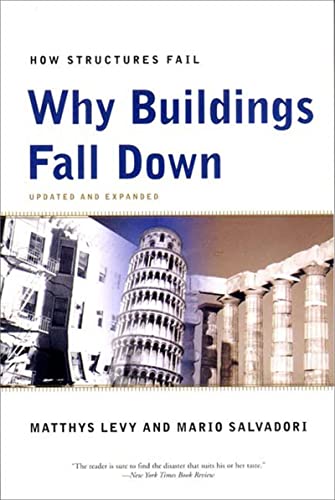
Unlike Mario Salvadori’s book entitled, “Why Buildings Stand Up: The Strength of Architecture”, which focuses on the engineering facets that ensure structures remain solid, this follow-up book examines the ways structures can fail. Joined by Matthys Levy, the two structural engineers explore a series of examples of structural failure from ancient times to the present. These examples range from ancient domes such as Istanbul’s Hagia Sophia to the collapse of the modern Hartford Civic Center in 1978. From the man-caused destruction of the Roman Pantheon to the earthquake damage of 1989 in Armenia and San Francisco, the authors review the factors of each example and what we can learn from these structural failures.
Circles in the Sky: The Life and Times of George Ferris
By Richard G. Weingardt, P.E.
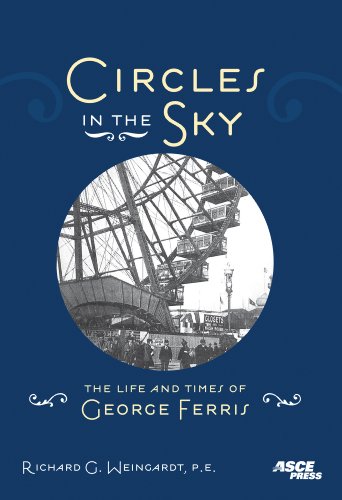
The first full-length biography of George W. G. Ferris Jr, “Circles in the Sky” details the life of the man responsible for designing and building the Ferris Wheel. This engineering marvel was revealed to the world in 1893 at the World’s Columbian Exposition in Chicago. It stood several stories taller than any existing American building, carrying passengers to 264 feet and offering views never before possible. It was the only structure of its time to rival the Eiffel Tower. Recently, there has been a revival of Ferris wheels around the world with the London Eye in 1999, the Star of Nanchang in 2006, and the most recent 2008 Singapore Flyer.
Skunk Works: A Personal Memoir of My Years of Lockheed
By Ben R. Rich and Leo Janos
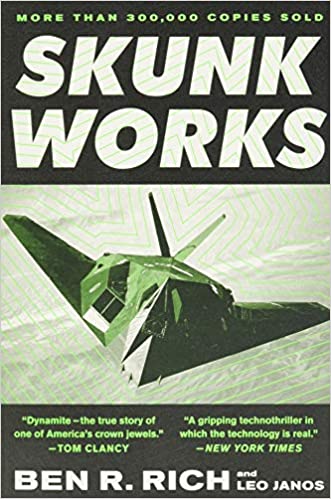
Skunk Works is the true, never-before-told story about America’s top-secret and most successful aerospace operation and quest to dominate the skies. Ben Rich, the former head of Lockheed Martin’s operation, tells the story of the secret aircraft that changed history. From the U-2 spy plane and the SR-71 Blackbird to the F-117 Stealth Fighter, this book features some of the most impressive aviation achievements and extraordinary feats of engineering of the 20th century.
The Tower and the Bridge: The New Art of Structural Engineering
by David P. Billington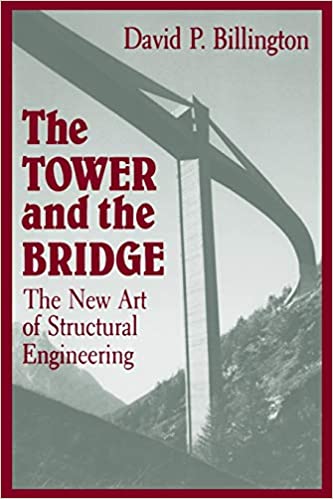
Not only do great structures overcome technical challenges but the very best of them achieve the status of art. The Eiffel Tower, the Brooklyn Bridge, and the concrete roofs of Italian engineer Pier Luigi Nervi are all examples of structural art according to David Billington. Using brilliant photographs and illustrations, Billington discusses the work of leading structural engineer-artists Othmar Ammann, Flex Candela, Gustave Eiffel, Fazlur Khan, Robert Maillart, John Roebling and many more.
The Existential Pleasures of Engineering
By Samuel C. Florman
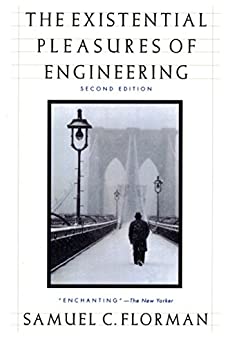
Engineering is crucial and fundamental to our society but is it more than that? Samuel Florman views it as a response to some of our deepest creative impulses. As Florman explores how engineers think and feel about their profession, he celebrates that engineers have shaped the modern world and adamantly defends it against people who claim it has created more problems than solutions. He details the rise and fall of the popularity of engineers as they went from being seen as “benefactors of mankind” during the “Golden Age of Engineering” (1850-1950) to “prophets of doom” during the cold war era. Florman goes on to describe a new type of critic, which he calls the “Anti-technologists” and provides enthusiastic and thought-provoking rebuttals to their critical points of view.
Interested in a Civil Engineering Career?
If you are interested in a career in civil engineering, Brighton College may be right for you. Brighton College offers in-depth training in AutoCAD, Civil Infrastructure Design, Architectural Design, and Construction. Fill out the form below for more information!





